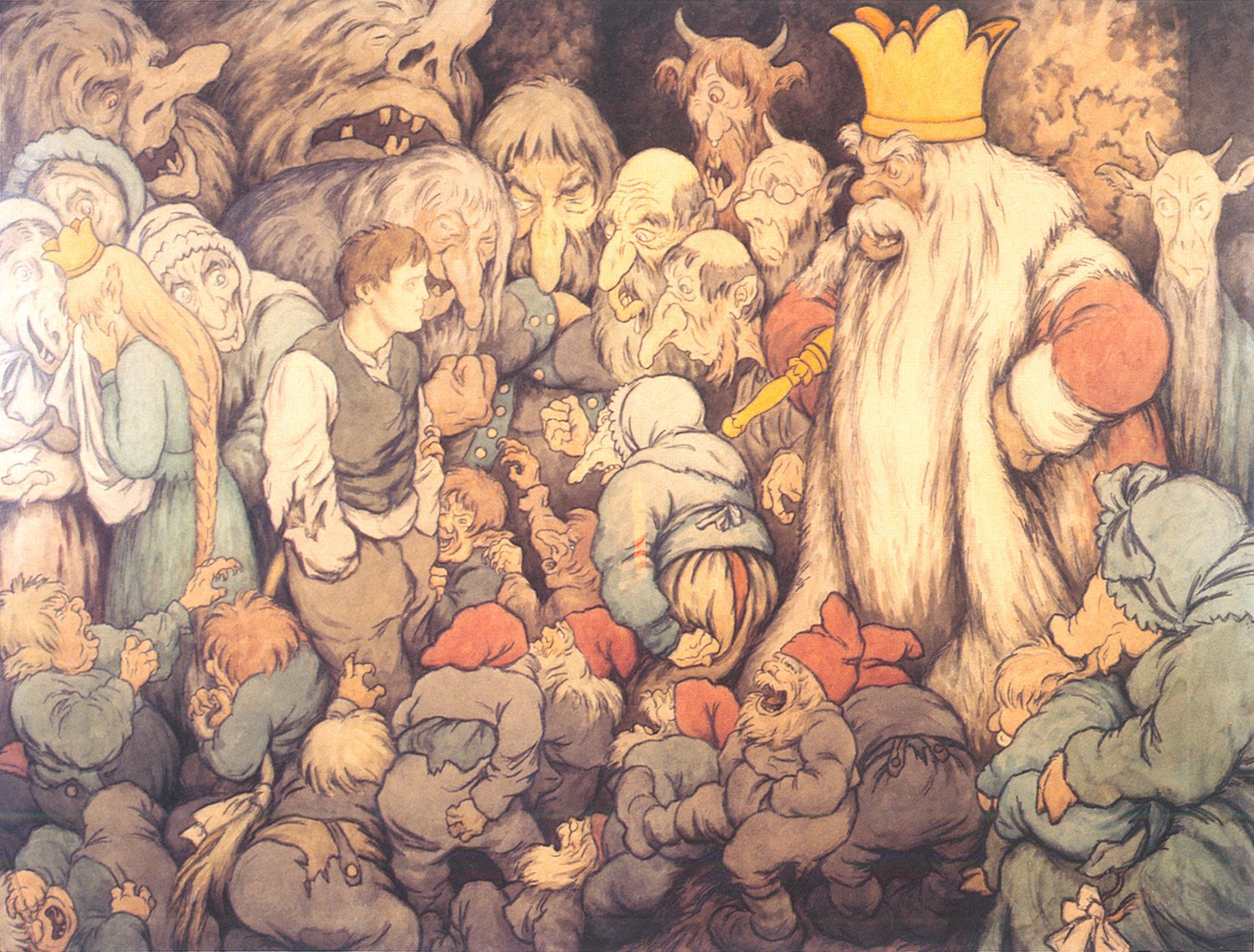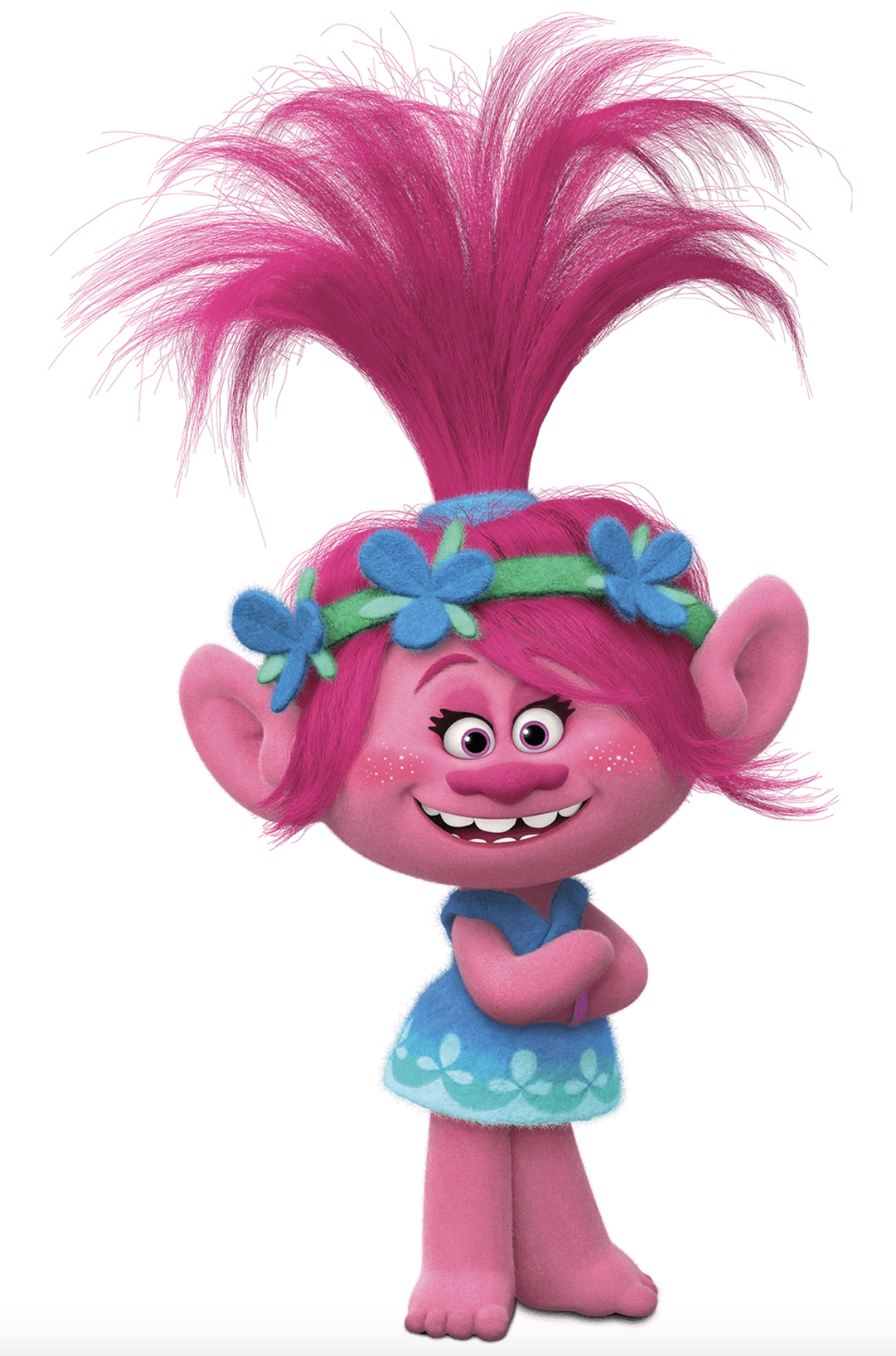Trolls: An Introduction
By Kathryn Larson
One of Scandinavia’s most famous mythological creatures is the troll. Like many folkloric figures, trolls and their depictions have varied throughout history. From hostile enemies of mankind, to beloved cultural icons; from beast-like monsters, to scruffy munchkins; what constitutes a troll can vary quite a bit indeed. As such, it can be hard to pin down a single definitive picture of a troll, though there are certain characteristics that have been traditionally associated with them throughout the years. So, let’s endeavor to look further beneath the surface, try to shine some light into the cavernous world of trolls, and learn more about these dynamic magical creatures.
Origins
The word “troll” has its origins in the Old Norse language, with the term meaning, “giant” or “demon.” Eventually, the word was adopted into the English language as well. Stories about trolls originated in Norse mythology, with the creatures sometimes conflated with giants, dwarves or even elves. The term “troll” could also be used to refer to any hostile folkloric creature, though in the modern consciousness the term tends to be associated with a specific magical creature.
Appearance
In general, trolls are humanoid in appearance, with a stocky build and rough stone-like or leather-like skin. While traditionally large in stature, trolls can vary in size depending on the story or the type of troll being depicted. Some could be the size of mountains, while others could be small enough to fit into a doll house. They are often said to have bushy hair, large noses, and some may have tails. While most trolls are described as being rather homely, their appearance can run the gambit from hideous, to normal-looking, to very beautiful, depending on the story.
Strengths & Weaknesses
In most stories, trolls are very strong and durable creatures. Their tough skin makes it hard for them to be hurt, and their physical strength allows them to pull off incredible feats, resulting in them having very few natural predators. Some trolls are also able to wield magic spells and craft alchemical potions, making them both powerful allies or powerful foes, depending on whose side they’re on. They are also known to have long lifespans.
However, like all creatures, trolls have some significant weaknesses as well. Traditionally, due to their pagan origins, trolls are said to be repelled by the sign of the cross, various other Christian holy items, church bells and prayers. Another significant threat to them is the sun. While there are some exceptions, in many folktales about trolls, sunlight is known to turn them into stone (either temporarily or permanently), or cause them to burn, explode or turn to dust upon contact.
Temperament & Lifestyle
Traditionally, trolls were seen as hostile towards humans, especially the trolls conflated with giants (as giants were often the enemies of the gods and humans in Norse mythology). These sorts of trolls may be animalistic in their behavior, or more human-like but with highly aggressive tendencies. Trolls that more closely resemble humans may attempt to blend into human society on occasion. Sometimes they are merely curious about humans, or just want access to human goods and amenities. Meanwhile, others may try to pass as humans in order to seek opportunities to do mischief, to steal human goods, or to steal people away. Sometimes a troll would swap places with a human, making them a “changeling.” Other times a troll may try to kidnap or lure a person away in order for that person to become the troll’s servant, their spouse, or their next dinner.
However, there have also been stories about trolls being neutral or even friendly towards humans. Some of these tales involve trolls trading various goods with humans, with some of their favorite things being coffee, milk, beer, bread, bacon and fine linens. Trolls may also do chores or favors for humans if they have been treated kindly, and/or if they find the payment for the task sufficient. However, if mistreated or offended, a troll may exact harsh retribution.
When it comes to troll society, trolls may live alone or form family groups. Most of the time they prefer to live rural lifestyles in the remote forests and mountains of Scandinavia, where some of them establish farms to grow their own crops, raise livestock, and craft homemade goods. Sometimes these trolls will live in houses or cottages, though most of the time they are shown living in caves. Speaking of cave-dwelling trolls, while most trolls prefer to live remotely, there are stories of some coming together to create vast cave cities within the mountains. These troll cities may have a chieftain, king and/or queen leading them. The cities may also contain rich mines, where the trolls collect and guard various precious metals and gems.
Some Famous Trolls
Over the years, many stories have been told about trolls – from classic myths and legends, to various works of art and literature, to modern day films and TV shows. A handful of some of these famous trolls include:
Grendel – A troll/giant from the story Beowulf.
Dovregubben / The Mountain King – The troll king from Henrik Ibsen’s Peer Gynt, and the character whose main music theme is “In the Hall of the Mountain King” by Edvard Grieg.
Finn the Troll – A troll with a story similar to Rumpelstiltskin’s, where he lost a wager due to a local churchman finding out his true name.
The Bridge Troll – From the fairy tale, “The Three Billy Goats Gruff.”
John Bauer’s Trolls - John Bauer was a Swedish illustrator who drew many famous pictures of trolls.
Moomintroll – The main character of Tove Jansson’s comic series, The Moomins.
Ny Form Trolls – A famous collection of Norwegian troll figurines, beginning in the 1960’s.
Troll dolls – A famous line of toys created in 1956.
Princess Poppy – One of the main characters of the Trolls film series, inspired by the 1950’s toys.
The Mountain Troll – The troll from the book Harry Potter and the Sorcerer’s Stone.
Blinky – One of the main characters of the Trollhunters TV series by Guillermo del Toro.
Thomas Dambo Trolls – A series of giant wooden troll statues made by Danish artist Thomas Dambo.
As we reemerge back into the sunlight, I hope you’ve learned something new about the wild and whimsical world of trolls. Whether you imagine them to be the formidable foes guarding a Viking’s treasure, to the fun-loving neighbors who scurry about the woods, I hope you have a newfound appreciation for these classic creatures of Nordic folklore.









